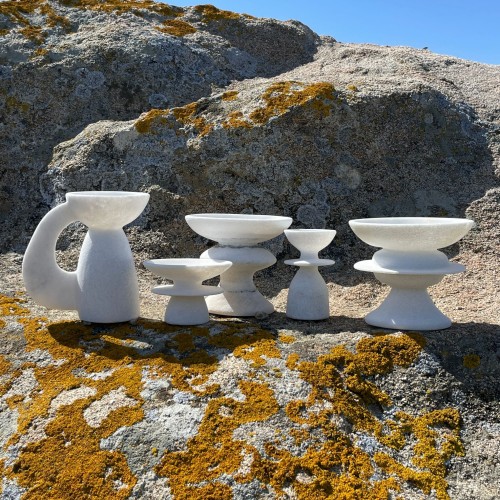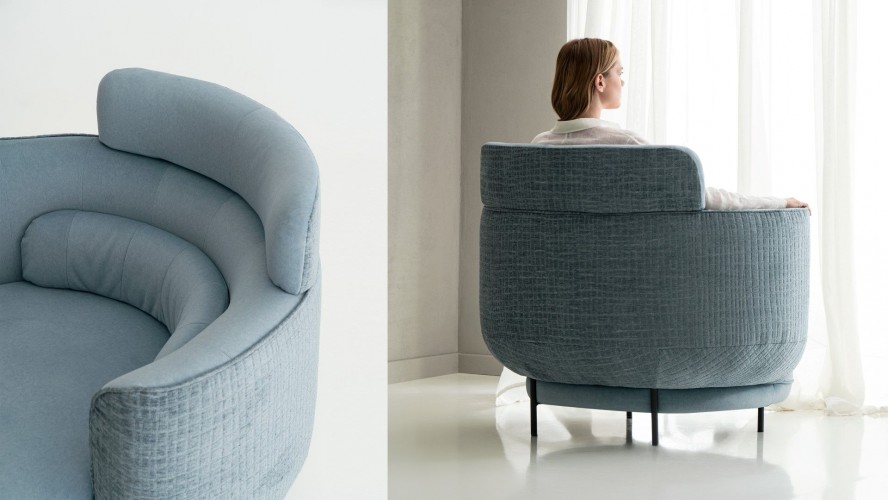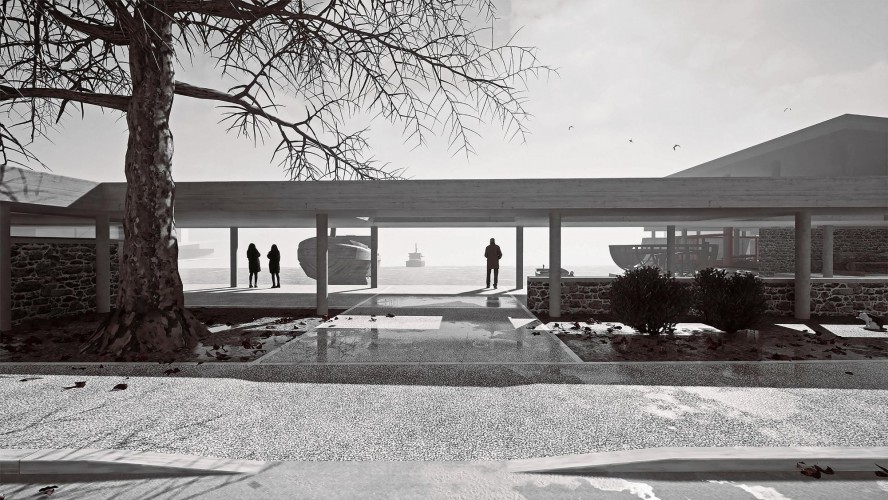Συνέντευξη με την Αθηνά Κουμπαρούλη: Μεταξύ Αρχαιολογίας και Σύγχρονης Τέχνης
DS.WRITER:
Sophia Throuvala
Κεντρική Εικόνα: Appia 39, Chapter 2, Stratigraphy of Vessels detail, 2022
Η Αθηνά Κουμπαρούλη είναι Συντηρήτρια αρχαιοτήτων και εικαστικός-designer. Έχει αποφοιτήσει από το μοναδικό στο είδος του ελληνικό μεταπτυχιακό πρόγραμμα “Μεταβιομηχανικός Σχεδιασμός και Καλλιτεχνικές Πρακτικές”, του Πανεπιστημίου Θεσσαλίας στον Βόλο. Στην εικαστική και σχεδιαστική της δουλειά συνδυάζει τόσο τις ανασκαφικές και ερευνητικές πρακτικές του αρχαιολογικού και αρχαιογνωστικού κλάδου, όσο και τον πειραματισμό και το ξάφνιασμα της σύγχρονης δημιουργίας.
Η παρουσίαση των “ευρημάτων” της αποτελεί μια προσέγγιση της ιστορικής αλλαγής στη μικροκλίμακα του εκτεθειμένου έργου, το οποίο αλλάζει με την πάροδο του χρόνου είτε μόνο του είτε σε διάδραση με το κοινό. Το έργα της διερευνούν την ιδιαίτερη συμβίωση που επικρατεί στο πεδίο της “νέας οικολογίας”, που χαρακτηρίζει τη σύγχρονη σχέση ανθρώπου-φυσικής και θέτει ταυτοτικά ερωτήματα.
Μιλήσαμε μετά την πρόσφατη επιστροφή της από τη Ρώμη στην οποία διέμεινε για έναν μήνα. Εκεί, δημιούργησε ένα υβριδικό έργο μεταξύ επιστημονικής ανασκαφής και σύγχρονης εικαστικής εγκατάστασης με στόχο την επικοινωνία με το κοινό.
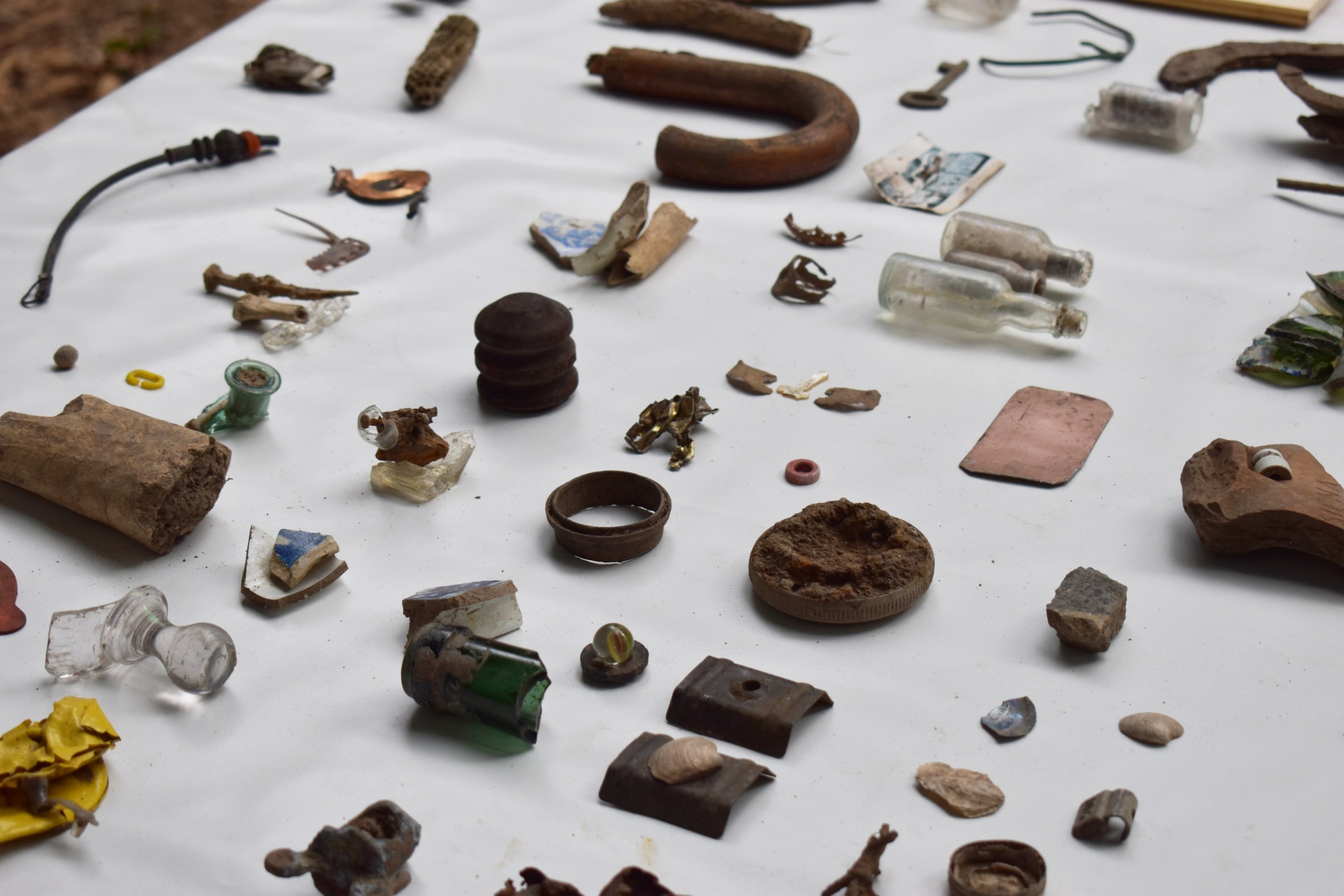
Appia 39, Chapter 1, Excavating the excavated soil detail, 2022
Ποια η σχέση σου µε την αρχαιολογία και ποια η σύνδεσή της µε το σύγχρονο design στο επίπεδο της υλικότητας;
Εργάζοµαι στο πεδίο της συντήρησης σε αρχαιολογικά έργα και ταυτόχρονα σε σύγχρονους χώρους τέχνης. Οι δραστηριότητες αυτές, η χειρωνακτική εργασία και το γεγονός ότι έρχοµαι σε επαφή µε τον υλικό πολιτισµό που αλληλεπιδρά µε το φυσικό περιβάλλον, είναι αυτά που διαµορφώνουν την πρακτική µου. Το αρχαιολογικό πεδίο είναι ένας χώρος όπου οι δύο αυτές καταστάσεις συγχέονται και αλληλεπιδρούν. Στην ανασκαφή, η προσπάθεια της φύσης να αφοµοιώσει τα υλικά κατάλοιπα είναι εµφανής και η αρχαιολογική διαδικασία έρχεται να διακόψει αυτήν την προσπάθεια. Τα αντικείµενα-ευρήµατα συµβάλλουν στην ερµηνεία του παρελθόντος, και οι συντηρητές που καλούνται να τα επαναφέρουν σε µία αναγνώσιµη κατάσταση τελικά συµβάλλουν υλικά στο αφήγηµα.
Υπάρχει δηλαδή σύνδεση µεταξύ του ιστορικού υλικού αποθέµατος και της σύγχρονης πρακτικής; Πώς αυτό γίνεται εµφανές στη δική σου δουλειά;
Τα αντικείµενα και ο υλικός πολιτισµός έχουν πολλαπλές ερµηνείες που µεταβάλλονται από τα πώς, πού, πότε και γιατί γίνονται, και από ποιον. Βασιζόµενη σε αυτή την ιδέα, στην εικαστική µου πρακτική επιλέγω να εξερευνήσω και να αναπτύξω διαφορετικές ερµηνείες, υποθετικές καταστάσεις και δυνατούς συνδυασµούς και να εξερευνήσω ένα άλλο είδος υλικότητας. Μια υλικότητα που δηµιουργείται από τη σχέση των αντικειµένων µεταξύ τους, τη σχέση τους µε το περιβάλλον στο οποίο κατοικούν, και τις συναισθηµατικές συνδέσεις που αναπτύσσουµε µαζί τους.
Η πρακτική µου είναι αποτέλεσµα µιας ερευνητικής διαδικασίας που ξεκινάει από την έρευνα πεδίου σε τόπους/χώρους/καταστάσεις. Επιλέγω τοποθεσίες που βρίσκονται σε µετάβαση και όπου επικρατούν ιδιαίτερες ισορροπίες και περίεργες αλληλεπιδράσεις µεταξύ πολιτισµού - φύσης, τις οποίες µε ενδιαφέρει να ερµηνεύσω εικαστικά. Συνδυάζω τα στοιχεία της επιτόπιας έρευνας µε βιβλιογραφικές αναφορές από διάφορα πεδία και παράγω αυτό που ονοµάζω υλικές αφηγήσεις.
Χρησιµοποιώ συχνά οργανικά υλικά, εξερευνώ τις ιδιότητες των υλικών -κάτι που προϋποθέτει η εργασία της συντήρησης-, αλλά εκτός από τη συντήρηση πειραµατίζοµαι και επιχειρώ να τους αποδώσω νέες ιδιότητες µε κυριολεκτικό και µεταφορικό τρόπο.
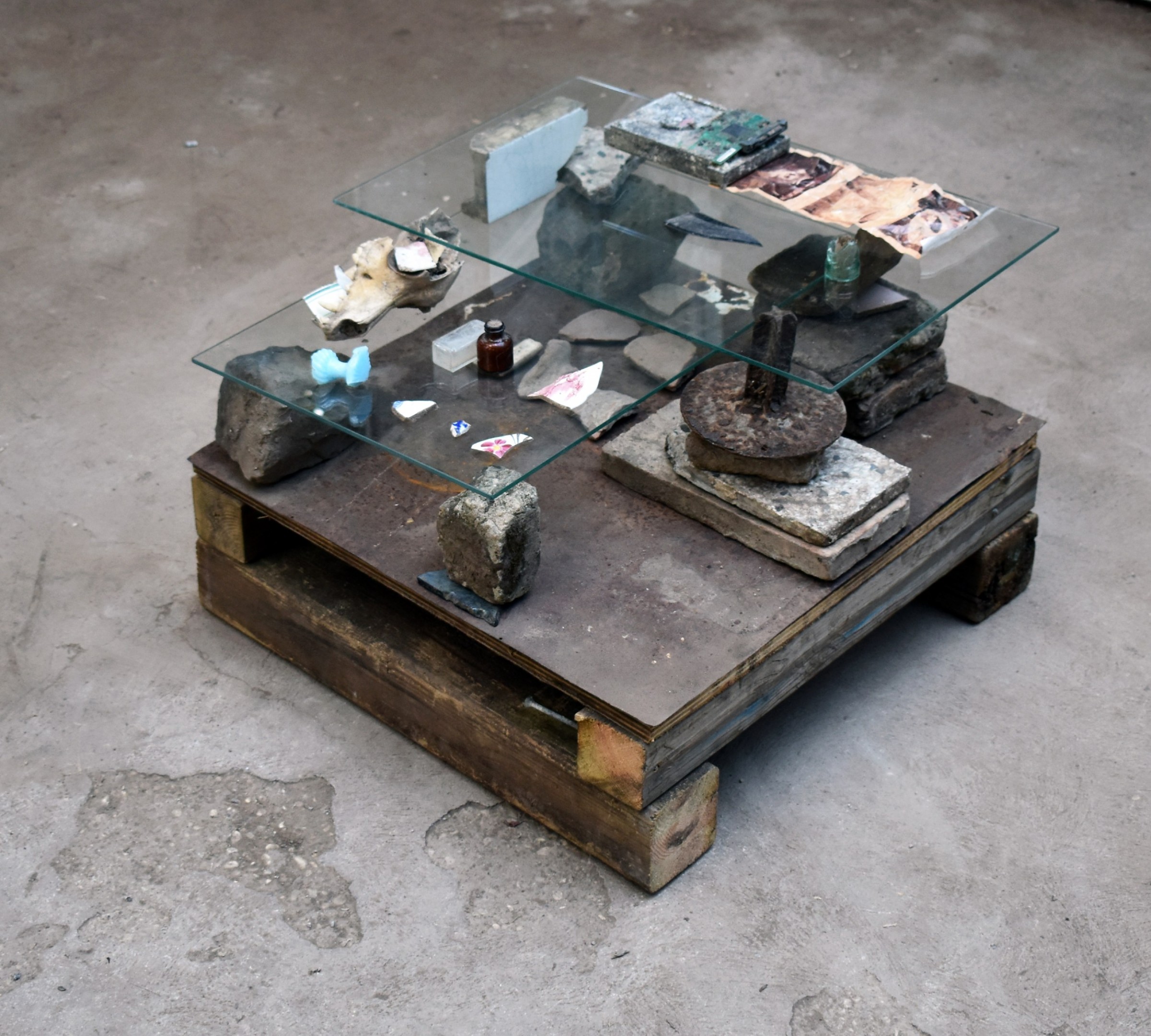
Appia 39, Chapter 2, Stratigraphy of Vessels, 2022
Θα ήθελες να µας πεις για το πρόσφατο έργο σου Appia 39, το οποίο έλαβε χώρα στη Ρώµη το φετινό καλοκαίρι; Τι µπορεί να προσφέρει µια πόλη µε τόσο σηµαντικό αρχαιολογικό φορτίο στο σύγχρονο πειραµατικό design;
Βρέθηκα εκεί στο πλαίσιο ενός residency, προσκεκληµένη από το ECeC Laboratory και την αρχαιολόγο Francesca Fiano (scientific advisor του εικαστικού προτζεκτ) σε µία ανασκαφή σε εξέλιξη που εκτελούσε το πανεπιστήµιο της Ferrara. Η ανασκαφή ήταν ανοιχτή και επισκέψιµη και το ζητούµενο ήταν ένα έργο που θα άνοιγε έναν διάλογο µε το κοινό. Το έργο αναπτύχθηκε επιτόπου κατά τη διάρκεια της ανασκαφής, µέσα σε έναν µήνα. Το να δουλεύω σε µία ανασκαφή σε εξέλιξη και να µπορώ να εντάξω όλη τη διαθέσιµη και αφιλτράριστη πληροφορία σε ένα εικαστικό έργο, ήταν µία ιδιαίτερη και σπάνια συνθήκη.
Θέλησα να ασχοληθώ µε το θέµα της ερµηνείας του υλικού πολιτισµού και του τοπίου, χωρίς όµως να βασιστώ σε προϋπάρχουσες ερµηνείες που αφορούσαν την αρχαιολογία και µυθολογία του µέρους, ή τον λόγο για τον οποίο επιλέχθηκε να ανασκαφεί το συγκεκριµένο σηµείο. Το έργο αποτελείται από 3 σημεία κατά τα οποία παρατήρησα και τελικά “δανείστηκα” τις αρχαιολογικές διαδικασίες/μεθόδους, αναπτύσσοντας έτσι μια παράλληλη αφήγηση με αυτή της αρχαιολογικής ανασκαφής. Αρχικά, με τη λογική που στο σύγχρονο design αποκαλούµε found object, ξεκίνησα µία δεύτερη ανασκαφή στα ανεσκαµµένα χώµατα και µπόρεσα να συλλέξω πολλά πράγµατα τα οποία στη συνέχεια καθάρισα, φωτογράφισα και τεκµηρίωσα. Μιλάµε για αντικείµενα πιο σύγχρονα, ή τουλάχιστον του περασµένου αιώνα, που περιείχε το ίδιο χώµα της ανασκαφής σε πολλά θραύσµατα. Κάποια από αυτά τα ευρήµατα τοποθετήθηκαν σε πάγκο εργασίας και ονοµάστηκαν ευρήµατα της αρχαιολογίας του µέλλοντος. Τα ευρήματα αυτά αποτέλεσαν έμπνευση για τα επόμενα 2 σκέλη του έργου.
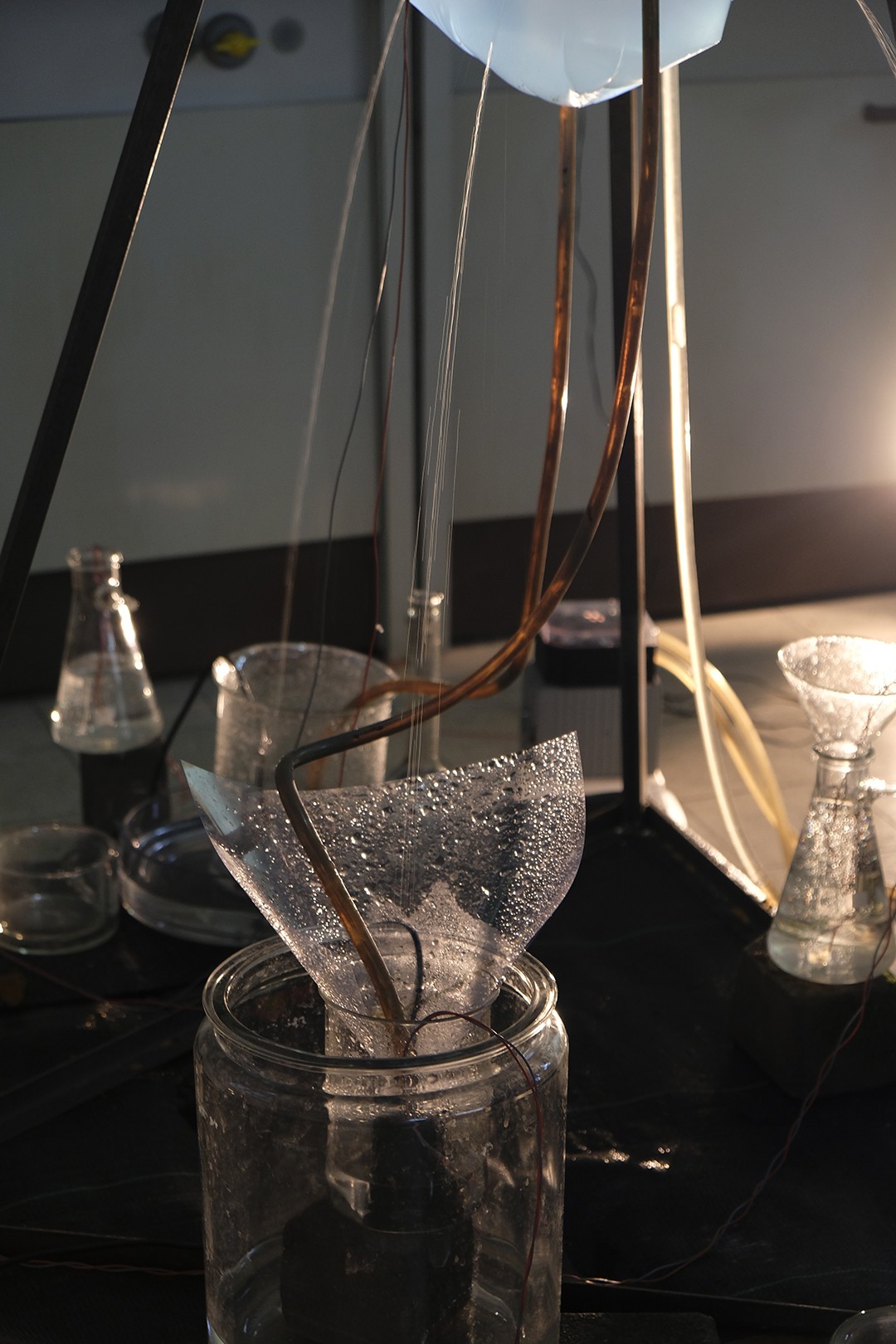
More than water more than rain I need electricity, 2019, Eindhoven
Ποιο το feedback του κοινού, δηλαδή μιας ολόκληρης πόλης που έχει συνηθίσει να ζει ανάμεσα σε -άλλου τύπου- ευρήματα;
Ιδιαίτερα ενδιαφέρουσα ήταν η συμμετοχή του κοινού όταν ερχόταν σε επαφή με αυτά τα ευρήματα, δηλαδή αντικείμενα σε αυτούς οικεία, που όμως έρχονταν σε αντιπαράθεση με τα αρχαιολογικά ευρήματα. Τελικά, όμως, ο κόσμος άρχισε να τα συνδέει με δικές του εμπειρίες και αναμνήσεις. Μέσα από αυτές τις συναντήσεις αναπτύξαμε μια μεθοδολογία που ευελπιστούμε να εξελίξουμε και να μεταφέρουμε και σε άλλους αντίστοιχους χώρους, αυτή τη φορά στην Ελλάδα. Παράλληλα, υπάρχει ένας κύκλος ανθρώπων που διαπραγματεύεται αυτά τα θέματα με πειραματική προσέγγιση και εκτός στενών ορίων, έτσι ελπίζω ότι θα προκύψουν οι προϋποθέσεις και η ευελιξία που θα υποστηρίξουν ανάλογα εγχειρήματα εδώ.
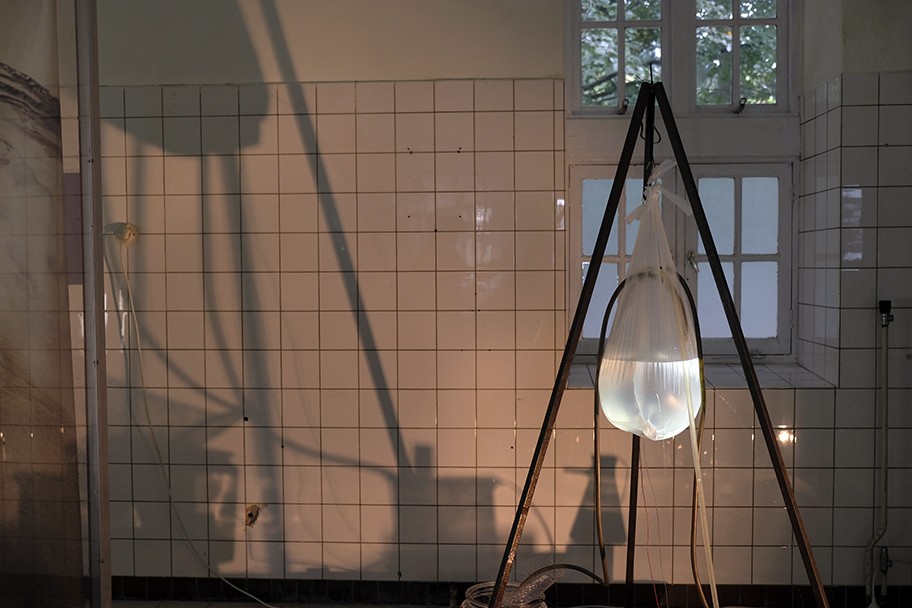
More than water more than rain I need electricity, 2019, Eindhoven
Στη δουλειά σου ασχολείσαι πολύ µε το φυσικό στοιχείο και τη σχέση του µε το κατασκευασµένο-αστικό, σωστά; Ποια η σύνδεσή σου µε αυτόν τον κόσµο των φαινοµένων;
Η σύνδεσή µου είναι αρχικά προσωπική. Βρίσκω πολύ ενδιαφέρουσες τις φυσικές λειτουργίες. Χωρίς απαραίτητα να µπορώ να εξηγήσω το γιατί µε εµπνέουν. Έχω µια τάση να αναγάγω τις εικόνες και καταστάσεις του αστικού περιβάλλοντος στις αντίστοιχες/ανάλογες του φυσικού. Παράλληλα, η συντήρηση µε έχει φέρει σε έντονη επαφή µε τα φυσικά φαινόµενα, τις αλληλεπιδράσεις των φυσικών στοιχείων µε τον τεχνητό πολιτισµό και τα υλικά του.
Το έργο σου, More than water more than rain I need electricity, που εξέθεσες στο Eindhoven το 2019, είναι ένα τέτοιο έργο, που επεξεργάζεται δηλαδή το ζήτηµα της φύσης και των νέων εκδοχών της;
Αφορά τα παράδοξα της νέας φύσης. Εντόπισα αρχικά µια βιοµηχανική περιοχή, η οποία είναι συγχρόνως χαρακτηρισµένη και περιοχή Natura, γιατί κάποια σπάνια είδη κατοικούν εκεί ακριβώς λόγω του µολυσµατικού της χαρακτήρα. Αφού έκανα επιτόπια έρευνα πεδίου, κατέγραψα τον τρόπο χρήσης του νερού από τη βιοµηχανία, και τις µεγάλες αλλαγές που έφερε στο τοπίο η µετακίνηση µεγάλων όγκων νερού και γης προκειµένου αυτή να εξυπηρετηθεί. Εστίασα στη σχέση του νερού µε τη βιοµηχανία και θέλησα να µιλήσω για αυτήν µέσα από µια εγκατάσταση σιντριβανιού. Επέλεξα αυτή τη µορφή θεωρώντας ότι έρχεται σε αντίθεση µε το άγριο στοιχείο του καταρράκτη και συµβολίζει κατά κάποιον τρόπο την τιθασευµένη φύση. Στο µηχανικό -και οχι µνηµειακό- συντριβάνι της εγκατάστασής µου, το νερό κινείται µε τη βοήθεια των µηχανών, ενώ ο ήχος του νερού καθώς στάζει µπλέκεται µε τον ήχο των αντλιών και ενισχύει την ιδέα ότι τα φυσικά στοιχεία έχουν χάσει τη µεταφυσική-µαγική υπόσταση που είχαν κάποτε και έχουν πλέον µετατραπεί σε εργαλεία.
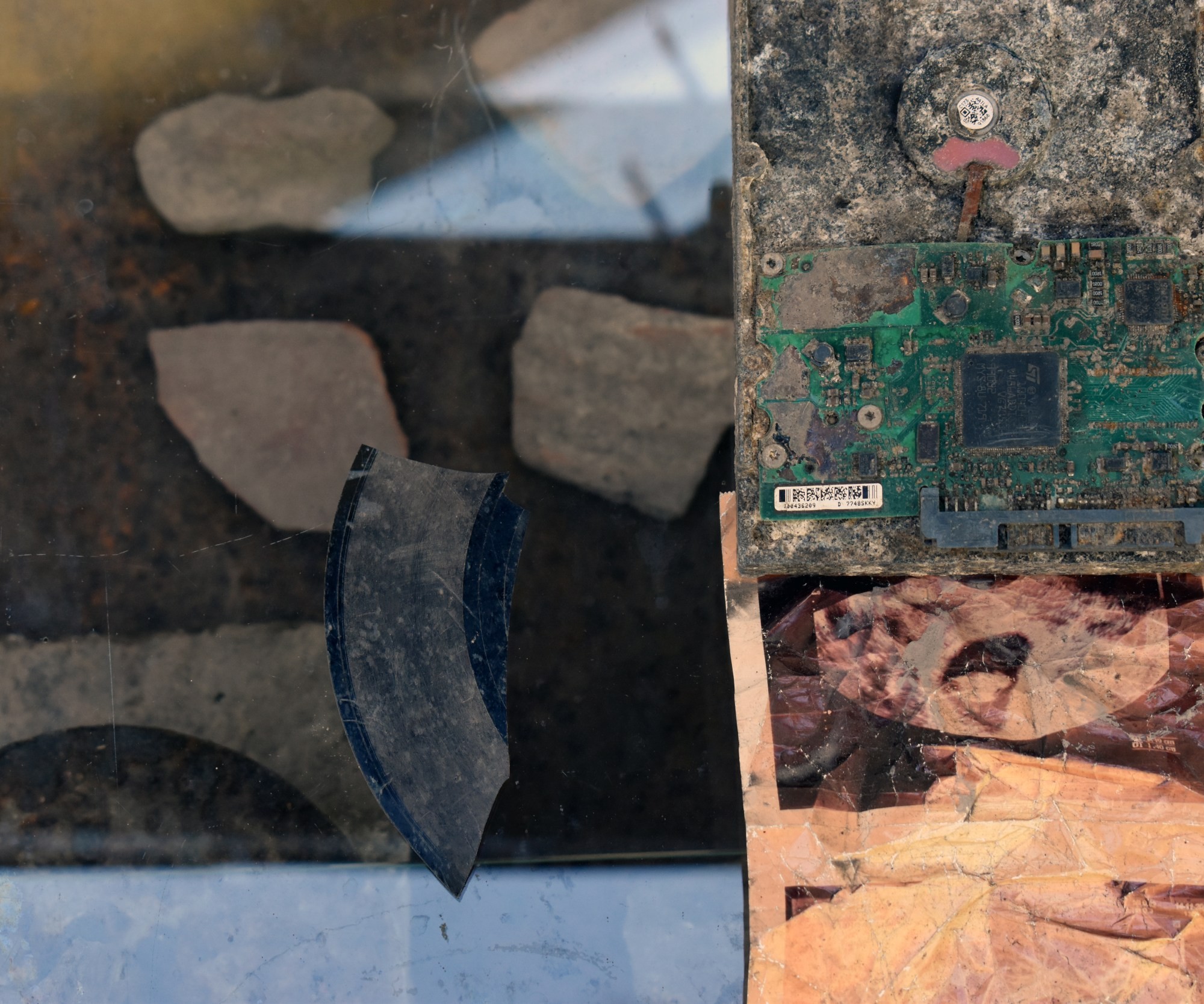
Appia 39, Chapter 2, Stratigraphy of Vessels, detail, 2022
Κλείνοντας, θεωρείς πως είναι η καλλιτεχνική έρευνα και το speculative design ένας τρόπος να εκφράσεις την αξία της ευαισθητοποίησης πάνω σε ζητήµατα που αφορούν το περιβάλλον ή το οικολογικό ζήτηµα;
Νοµίζω ότι εκφράζοµαι µέσα από αυτά τα δυο, γιατί σε όλα τα έργα ξεκινώ µε µία συνήθως περίεργη -πραγµατική όµως- συνθήκη, που θα µπορούσε να είναι και φανταστική. Καταλήγοντας σε ένα αποτέλεσµα-έργο από το οποίο είναι τελικά δύσκολο να ξεχωρίσεις το πραγµατικό από το -επιπρόσθετο- φανταστικό στοιχείο, καλλιεργείται, νοµίζω, το ενδιαφέρον και η έµµεση ή άµεση συµµετοχή του θεατή, όπως είναι π.χ η κριτική στάση απέναντι στο οικολογικό ζήτηµα.
Η Αθηνά Κουμπαρούλη βραβεύτηκε για την πολυδιάστατη έρευνά της στο πεδίο των εικαστικών τεχνών, της οικολογίας, της συντήρησης και του βιομηχανικού speculative design, από τα φετινά ARTWORKS (Εικαστικές Τέχνες, 2022) και είναι Fellow του Προγράμματος Υποστήριξης Καλλιτεχνών του Ιδρύματος Σταύρος Νιάρχος.
.jpg)




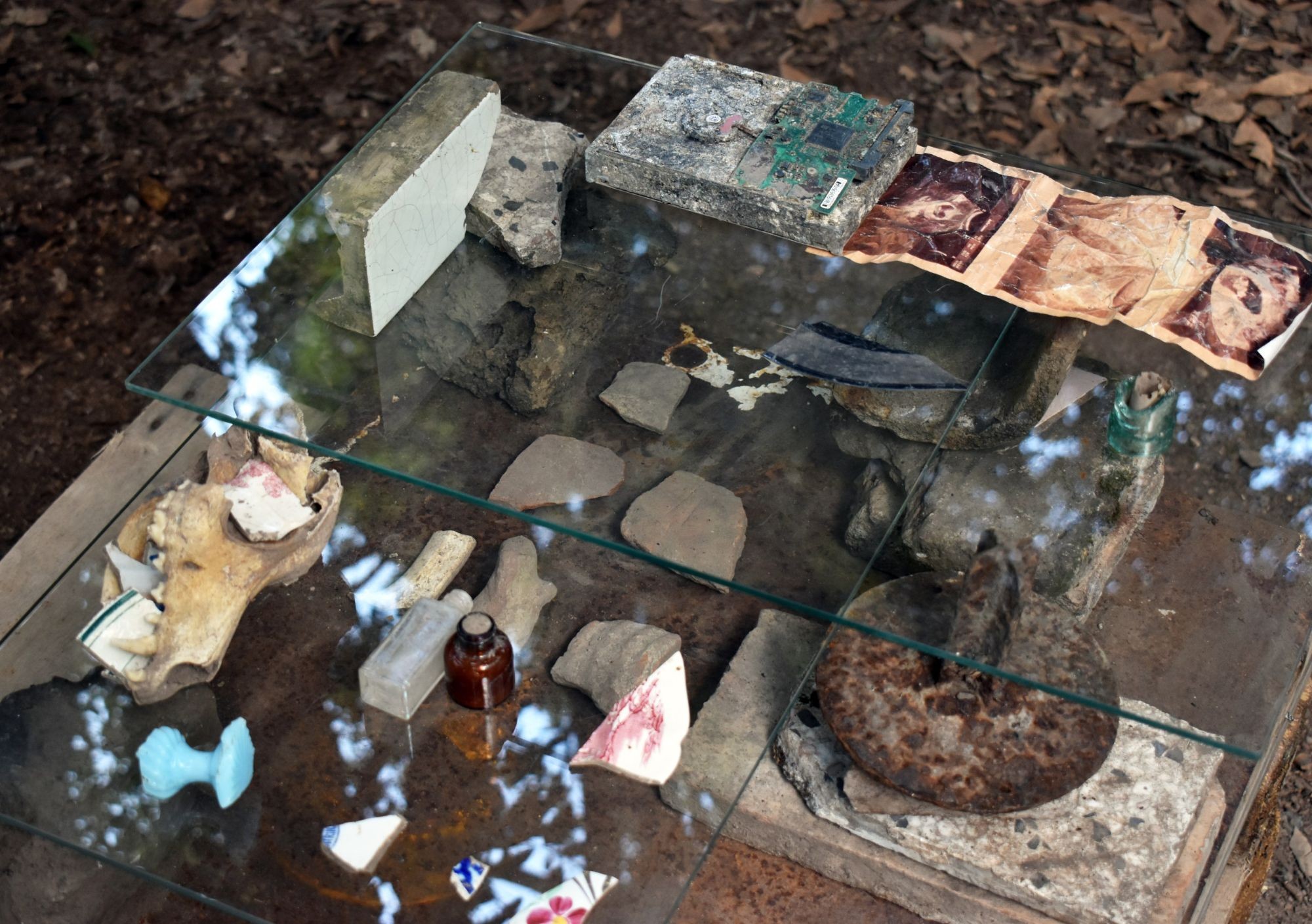
.jpg)
